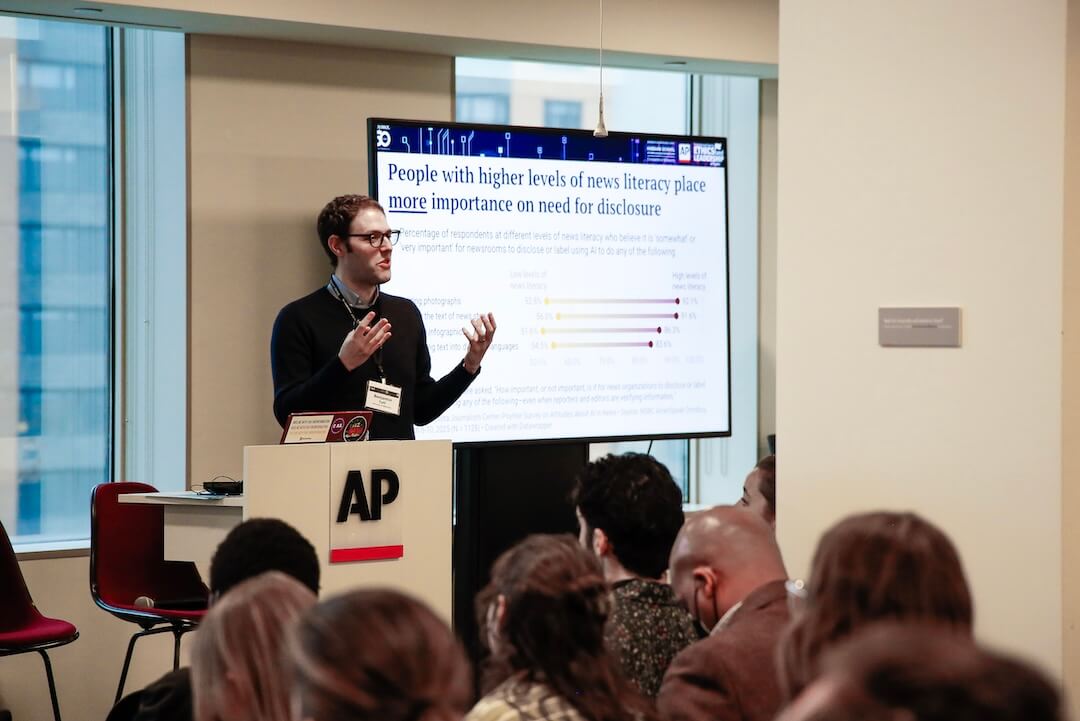
FILE – This July 14, 2010 file photo shows the Gannett headquarters in McLean, Va. Gannett Co. reported Overall company revenue growth of 15 percent. The media company said, Monday, Oct. 20, 2014. (AP Photo/Jacquelyn Martin, File)
Embedded in otherwise excellent third quarter financial results reported today by Gannett are some sobering numbers on the continuing decline of revenues for its newspaper division.
U.S publishing ad revenues year-to-date are down 6.3 percent. At Gannett, that difference is more than made up by booming broadcast operations and freestanding digital ventures like CareerBuilder. So revenues for the entire company are up a healthy 13.4 percent.
But I also consider USA Today and Gannett’s 81 community newspapers a reasonable proxy for the entire newspaper industry, which has stopped reporting its financial results quarterly. If the rest of the year is roughly in line, newspapers are on track again in 2014 to lose $1 billion-plus in advertising.
That’s against a 2013 base of $17.30 billion industrywide in daily print advertising or $23.57 billion including all form of advertising, according to estimates by the Newspaper Association of America.
Gannett’s advertising decline to date (-6.3 percent) roughly matches the industry rate in 2013 (-6.5 percent). So 2014 is proving no better than 2013. Recent waves of staff cuts as companies budget for 2015 suggest that revenue growth is not expected next year either.
At Gannett (and probably most U.S. papers) circulation revenues were up slightly for the quarter and holding even for the year. The papers are now cycling past one-time revenue gains of roughly 5 percent in both 2012 and 2013 from introduction of paywalls and price increases for print and print + digital subscriptions.
Digital advertising is increasing, mostly at USA Today, but not nearly enough to offset the print losses. And the continued growth of digital marketing services, sold to local businesses, is another plus.
In an earnings conference call, CEO Gracia Martore said another bright spot for the company has been the introduction of a section of USA Today news at its 35 largest papers. Surveys show a positive reader response, she said, in some cities justifying another round of subscription price increases.
There is an echo of that strategy throughout the industry. This weekend both The New York Times and Washington Post introduced print supplements which regional papers can include in their Sunday editions. The Post had earlier made a free subscription to its digital report available to digital subscribers of partnering regional papers.
This arrangement allows papers to focus on their local news report, while offering subscribers, especially the older demographic that prefers print, a fuller report of national and international news, as was standard in better financial times.
Gannett’s broadcast revenues are up 97.2 percent year-to-date in large part because the operation is much larger after acquisition of Belo’s 20 stations. Retransmission fees paid by cable systems to local stations continue strong, up 61 percent for the quarter.
And political advertising is booming beyond expectations. At the company’s Denver station — where Colorado has both a competitive governor’s and U.S. Senate race — this year’s revenues are even outpacing those of 2012, a presidential year, said Martore.
The different trajectories of broadcast and print have prompted Gannett to plan splitting those operations into two companies, a spinoff Martore said should be completed by mid-2015.
News Corp., Media General, Tribune and the Washington Post (now Graham Holdings) have already completed such a split and Scripps and Journal Communications plan one as part of a merger.
Other public newspaper companies, New York Times, McClatchy and Lee, do not own TV stations. So, soon there will be no combined print and broadcast operations among public companies, and some larger private companies like Hearst have separated TV and newspaper divisions as well.
In theory the print-only companies will benefit from management focused exclusively on their digital transformation, audience and advertising issues. And they won’t be competing internally with fast-growing broadcast for capital.
All that, however, leaves the big question lingering — can the companies slow the print advertising losses, generate enough digital ad growth, increase circulation revenue and bring in enough income from new ventures to make up the difference.








Comments